Worms
By
James Gratz, DVM
Worms are part of pigeon raising worldwide. Actually every species of animal is
infected by his or her own species of worms. Pigeons are infected commonly by
Roundworms, Hairworms, Gapeworms, and Tapeworms. None of the worms that
infect pigeons infect people. Some can infect more than one species of bird but
usually it is a different species or subspecies of worm.
Roundworms or ascarids are visible to the naked eye, looking like fine spaghetti.
Sometimes after deworming they will be visible in the droppings. Adult female
roundworms lay 1000’s of eggs per day. These eggs must develop outside the
bird for about two weeks for them to be infectious. Moisture and warmth is
required for them to develop. These eggs, with a larva inside, are then swallowed
in dust that is inhaled or from droppings or dust that settles in the water or on
feed. These larva hatch in the stomach then eat through the stomach wall and
crawl around inside the bird, especially the liver. Normally this doesn’t cause
problems. Eventually they make it back to the intestine and molt into adults. The
adults live in the intestinal space. It takes about 1-2 months for a fresh egg to
turn into an adult old enough to lay eggs. This is termed the prepatent period.
However no dewormer kills all the larval stages developing in the bird. Eggs will
be found in the feces much sooner than 30-60 days. It is a good practice to
deworm 2-3 weeks apart to maximize the % of worms killed. It is now
recommended in horses to deworm 4 times per year. Not every 3 months, but 3
times, 3 weeks apart in the spring and once in the late fall. This destroys the life
cycle rather than limiting it. A mild infection is not a serious problem but a severe
infection can result in starvation and death. Young birds just out of the nest are
most susceptible. Deworm them regularly. Roundworms in most species of
animal do not cause clinical disease in adults. Some of the birds will be carriers
and shed eggs, but no sickness will result. Deworm your old birds twice before
breeding to decrease the transmission to the young. A nutritional problem or
stress from other disease can trigger worm problems. Also a worm infection can
bring a bird down just enough that it will get sick from something else.
Hairworms or capillaria are the most serious of the worm diseases. Even adult
birds can die from starvation due to Hairworms. The life cycle is about the same
as for roundworms. It takes about 1 week for the egg to develop outside the
pigeon. Still the prepatent period is about 1-2 months. Adults are microscopic in
size. Adult worms burrow in the lining of the intestine, gizzard, ventriculis, and
even the crop. This creates lots of problems. It severely damages the lining and
lets Salmonella and E coli get a good start. Personally I think Salmonella can be fairly well controlled by preventing Hairworms and Coccidia. Salmonella can get
started on its own but not easily in a healthy bird. One of the Hairworms requires
an earthworm as part of its life cycle. I assume it is fairly rare in pigeons.
Capillaria lay many fewer eggs than ascarids so even one in a fecal float is
significant.
Gapeworms or syngamus are fairly rare but interesting. The adults live in the
trachea of the pigeon. This causes the bird to hold its head up and breath open-
mouthed. Eggs are coughed up and swallowed. The prepatent period is shorter
only 2 weeks. So if you run into this deworm weekly for 3-4 treatments. The eggs
look like the eggs of Hairworms but are twice as big. The adults will be clearly
visible in culled birds. Probably more of a concern if you also raise gamebirds or
chickens.
Tapeworms all require an intermediate host. Something swallows the egg, which
the pigeon later eats. The black bugs that live under feeders can transmit
tapeworms. Since pigeons rarely eat bugs or snails this disease is also
uncommon. However a tapeworm will live as long as the bird does. Prevention is
by keeping pests in the loft down to a minimum. Also some of the dewormers will
eliminate the adults. Fleas carry the tapeworm of dogs. Dog swallows flea and
gets tapeworms. Flea larva swallows tapeworm egg to complete the cycle. Just
for fun, there is a human tapeworm from beef.
Prevention is obviously a clean dry loft to prevent the eggs from developing.
Regular deworming is a must for maximum health. I suggest deworming young
birds 2-3 times at 2-3 week intervals. Deworm adults twice 3 weeks apart before
the breeding season. Also deworm before the racing or show season. That’s a lot
of deworming, but mother nature didn’t put all those birds in such a small coop.
Think about how rarely wild pigeons would be exposed to their droppings. That’s
why roundworms, especially, lay so many eggs.
It really pays to develop a relationship with your local vet to do fecal floats. Every
vet in practice can do them. Most are not familiar with birds at all, but the eggs
look the same as those found in any other species. Worms can develop
resistance to the dewormers we use so check to see if your program is working.
Try to avoid deworming while there are young in the nest.
Ivomec: The best dewormer to use. Will not get tapes but does nicely for
roundworms and Hairworms. I prefer to use the 1% cattle or hog injectable
individually treating the birds. The dose is 500-1000 micrograms, which is 1/10 of
one ml. Use a TB syringe for accurate dosing. Give orally. 1/10 is about 3 drops.
1% injectable is available at most all farm stores. 1% Dectomax is slightly better.
In other species it takes almost twice as long for egg shedding to resume after
Dectomax. Both products are 99% glycol which doesn’t mix real well in water so
using in the water is possibly less affective.
Tramisol A second good choice. Available at farm stores. Also does not get
tapes. Can not dose to treat individual birds. It requires 6 sheep oblates per
gallon to get hairworms. The downside is that this is close to the toxic dose, so
back down in the heat when water consumption is high. The dose for hairworms
is 7-15 mg per bird. The toxic dose is 20mg per bird which can cause vomiting
etc.
Droncit The choice for tapes. 1/4 pill per bird, if needed, of the 23 mg cat tablet.
Does not treat roundworms or hairworms. Prescription only.
Panacur/Fenbendazole,Telmintec/Mebendazole) Really good drugs along with
many other relatives. If used for three days in a row will kill almost any type of
worm. BUT will cause feather problems especially at higher doses or if repeated.
Piperazine) Is an outdated drug that only gets roundworms on a good day.
Diatomaceous earth is used in the feed and in the environment. Well
covered by Jim Vines in an article on the MSRA Web page. Be careful not to
inhale the dust. A mask is highly recommended.
Products and product strengths vary outside the US. Always double-check the
dose and the active ingredient. Consult your veterinarian as needed, especially
when using prescription drugs.
James Gratz, DVM
(from the International Modena Club pages)
~~~
Roundworms and Hairworms
Roundworms and hairworms are frequently involved in the worm infestation of the pigeons. Other types of worms play a lesser role. Roundworms and hairworms live as parasites in the intestine of the pigeons. They damage a pigeons body by extracting important nutritive substances from the digested food (roundworms), by the toxic effect of their excretion products and by destruction of the intestinal wall (hairworms).
The hairworms occurring in pigeons also attack other domestic and wild birds. Almost every other pigeon is infested with hairworms. Hairworm infestation is in fact the most common worm disease in pigeons. Roundworms occur only in pigeons. Every 5th pigeon is likely to be infested with roundworms. In many cases both types of worms appear at the same time. Young pigeons show increased susceptibility, whereas adult pigeons seem to develop some kind of immunity to these parasites. Although they may harbor isolated worms, symptoms of the disease are rarely observed. These pigeons are permanent carriers and are a constant source of infection for the rest of the loft, particularly the young pigeons.
Worms consist mainly of protein. They are protected against the digestive juices of the host by layers of keratin or chitin. In the intestine the worms adhere to the intestinal wall with suction cups (roundworms) or burrow into the mucosa (hairworms). For this reason, they are not washed away with the digested food (although their eggs are) and excreted in the droppings. Roundworms measure 2 to 6 cm in length and approximately 1 mm in diameter. They are visible to the unaided eye. By contrast, hairworms are considerably smaller and as fine as a hair. They are 26 mm long and only 0.08 mm in diameter.
Propagation is by the direct or indirect route. Worms with direct development do not need an intermediate host. The eggs excreted in the droppings go through a maturation stage in the environment and are taken up “directly” by the pigeon through the feed or water. With indirect development the egg first has to enter an intermediate host (earthworm) in which maturation occurs. A larva develops in the egg. When the pigeon eats the infected earthworm, the mature eggs get into the intestine where the egg is dissolved. The larva is released and develops into a sexually mature worm in the intestine of the pigeon. The pigeons can only become infected by the ingestion of mature (infective) eggs. Here the danger of infection is greater with worms propagating “directly” than those which multiply by indirect development, since the pigeons can re-infect themselves continually from their own droppings. It always takes some time (at least one week) before eggs become infective. Regular removal of the droppings is therefore the best preventive method against worm infestation.
Deworming must be carried out as as individual treatment, for the following reasons:
- Only in this way can the anthelmintic (worm medicine) be dosed accurately.
- As a result of the high concentration over a short period, a strong effect is achieved with a small quantity of active substance. In this way undesirable side effects are reduced or eliminated.
- Experience has shown that with treatment thru the drinking water, some pigeons will refuse to drink the water for up to 3 or 4 days, even if the deworming agent only slightly modifies the taste of the water. Such birds receive too little of the anthelmintic or none at all and remain worm infested and re-infect the rest of the loft again.
The medicine of choice is:Ivomec Cattle Wormer Injectable. Best on the market today. Effective against all worms, except tapeworms. For individual treatment. 3 drops down the throat, 2 or 3 times a year. Even helps against external parasites.
(from the Wings West Net pages)
~~~
Warnings about De-Wormers
The pigeon products, like CITROMED and BERIMAX will be produced and distributed from Norway, but we might set up production facilities in New Zealand as well to supply this part of the world.
The commonly used anthelminitic drugs Fenbendazole and Albendazole are toxic to pigeons.
410 pigeons of various species at San Diego Zoo and San Diego Wild Animal Park were examined alive or dead. All birds were healthy at the start point, and kept during a period of 45 days because of quarantine, relocation, or presale health cheque for observation. The symptoms looked for were weight change, leukopenia (too few white blood cells), bone marrow changes (less or more bone marrow than normal), small intestinal changes (injuries of the inner lining of the intestines, coursing diarrhoea and malabsorption) and survival.
The results looked as follows:
| Treatment given | Weight | Leukopenia | Bone Marrow | Intestinal | Survival |
| No treatment | Up 4,6 % | 12 % | 33 % Better | All normal | 91,7 % |
| Albendazole | Down 13,3 % | 100 % | 83 % worse | 77,8 % injured | 66,7 % |
| Fenbendazole low | Down 8,3 % | 83.3 % | 78 % worse | 91,7 % injured | 75,4 % |
| Fenbendazole high | Down 18,8 % | 100 % | 30 % worse | 50 % injured | 66,7 % |
What seems obvious is that both the drugs are disadvantageous to the pigeons. In all cases the pigeons loos weight after a treatment. Also, most pigeons develop leucopoenia. The fewer white blood cells in the medicated pigeons cause them more susceptible to bacteria and other microbial intruders. This might explain why the survival rate of the treated pigeons is lower then the untreated (controls). Most pigeons that died suffered from an infection. The bone marrow in involved in the production of blood cells, and in the treated birds the bone marrow was suppressed. Furthermore, the majority of the birds get more or less injured intestines, probably from these drugs.
So, why should we give the pigeons one of these drugs? Actually, this report point very strongly that these drugs must never be used unless they are absolutely needed. If you think the birds have got worms, the droppings must be tested by a veterinarian or a parasitologist to confirm the diagnosis. The best would be to test the droppings from each single pigeon, and only treat the birds were worm eggs are found. If intestinal worm infection is diagnosed on the loft, cleaning is very important to get rid of worm eggs in the dung. If you want to give any medication, any remedy containing albendazole ( like “Valbazen”) and fenbendazole (like “Panacur”) should be avoided. Because chemical similarity, it is likely that also flubendazole (like “Flunebol”), is harmful to pigeons.
Ivermectine (IVOMEC) might be a better alternative for pigeons. I have used this type of anthelmintic in my veterinary practice for 17 years and never seen adverse effects. However in-depth investigations on possible negative effects on pigeons are lacking for ivermectine and related drugs. Treatment should therefore be avoided unless a diagnosis has been confirmed by the veterinarian. The study referred to concerns many species of wild pigeons, but it is very likely that fenbendazole and albendazole will also harm racing pigeons at least as much. Especially in periods of stress such drugs can be very harmfull. Actually, there are reasons to believe that such drugs can trig many diseases like trichomoniasis, coccidiosis, adenovirus and salmonellosis. More generally, the use of any drug should be limited. Many of the more successful lofts do not use drugs alt all, unless a serous contagious diseases is diagnosed by the veterinarian. Simply because drugs generally do more harm than good on healthy pigeons.
Submitted by
Nils Reither, DVM (veterinarian) NORWAY
The complete article: Howard, L.L. et al.: Fenbendazole and Albendazole toxic in Pigeons and Doves. Journal of Avian Medicine and Surgery, 16(3): 203 -210, 2002.
(from thebirdmedicine.org website)
~~~
Treatment against Worms
Gord Chalmers wrote: Oxfendazole is a member of the benz-i-mi-da-zole family which is a large chemical family used to treat worm and fluke infections. However, there is widespread development of resistance and their use is decreasing. They have broad activity against roundworms and a wide safety margin. There are several: mebendazole, flubendazole, fenbendazole, oxfendazole, oxibendazole, albendazole, etc.. The most effective of the group are those with the longest life in the body – such as oxfendazole, fenbendazole, albendazole, because they are not rapidly metabolized to inactive products. Effective concentrations are maintained for an extended period in the plasma and gut. Mebendazole, flubendazole, and fenbendazole are effective against worms in the digestive and respiratory tracts of birds. Fenbendazole (commercial name: Panacur) is about 80-100% effective against roundworms but should be avoided because it can easily cause feather abnormalities in overdose. Toxic
Other wormers:
Ivermectin (Ivomec, Eqvalen): Broad spectrum wormer, a member of the avermectin family. Effective against roundworms, hairworms and stomach wall worms.
Dose: 500 -1000 mg per bird. Can be dosed in the drinking water, but the efficacy of this method is debatable. The surest way is to treat the pigeons individually. 1-2 drops by mouth of Ivomec is the correct dose. The higher dosage is needed to treat roundworms and, for some reason, even this is occasionally ineffective.
New generation avermectins such as Abamectin may be more effective. Abamectin is a relatively new product and is applied as drops to the skin; it is highly effective against hairworms and roundworms as well as external parasites such as lice and mites. It is currently available in Europe.
Moxidectin: A member of the Milbemycin family, Moxidectin is a highly effective product that provides prolonged protection against re-infestation. Effective against hairworms, roundworms and external parasites. It seems to be a relatively safe product that is used in the water and can be given during the breeding, moulting and racing seasons.
Levamisole (Tramisol, Levasol, Ripercol): Good against roundworms (70-90% effective), but usually fails when used to treat threadworms or stomach wall worms.
Dose: 1 to 1.5 grams per gallon for 1-2 days. NOTE: This dosage often causes some pigeons to vomit. This drug is an immune stimulant even at lower dosages.
Piperazine: Effective against roundworms only, and only 60-80% effective here.
Dose: 15 mg per bird (300 mg per gallon) for 2 days. It is best to avoid using piperazine.
Praziquantel (Droncit): Excellent against tapeworms and flukes.
Dose: 6 mg per pigeon once (1/4 of a cat-size Droncit tablet).
Pyrantel Pamoate: Excellent against roundworms – 80 to 100% effective.
Dose: 1-2 mg per pigeon – 75 mg per gallon for 1-2 days. Repeat in 3 weeks.
Hope this helps a bit.
(from the Pij’n Angels Forum)
~~~
Additional links:
Powdered Droppings – from the Alberta Classic website



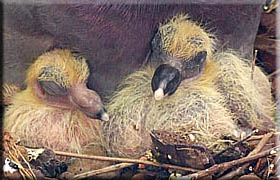
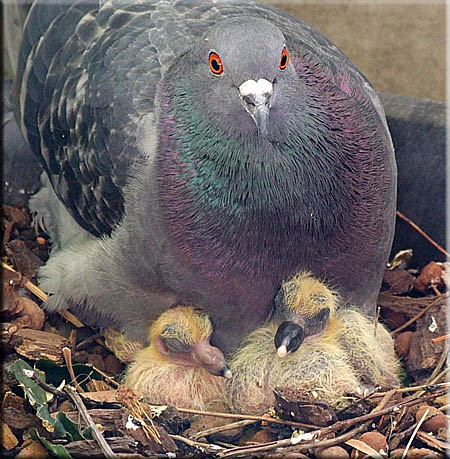
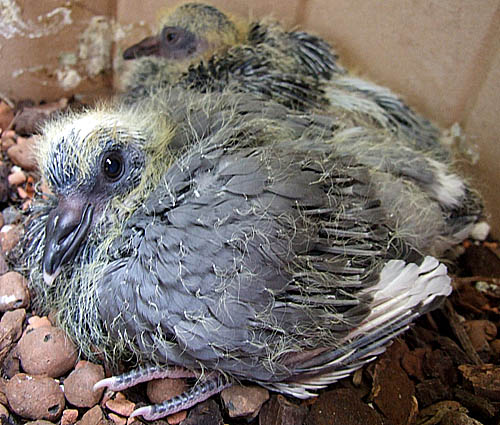

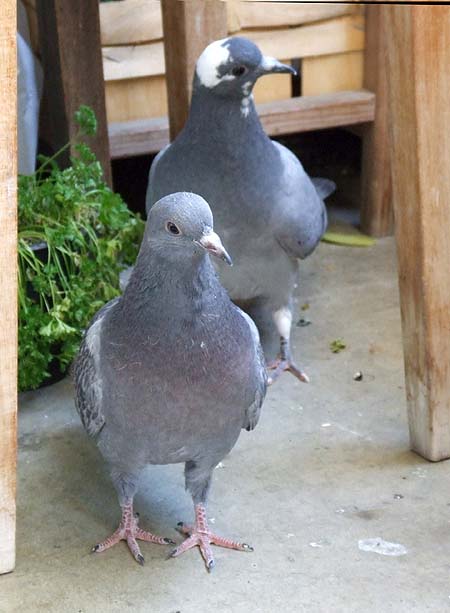
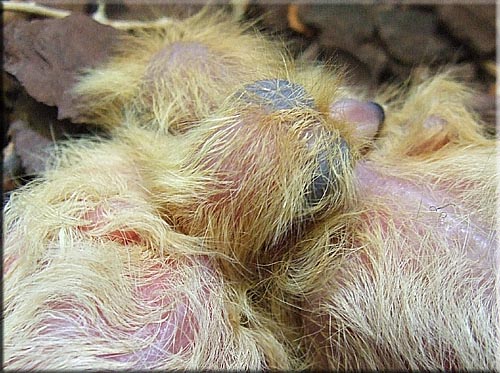
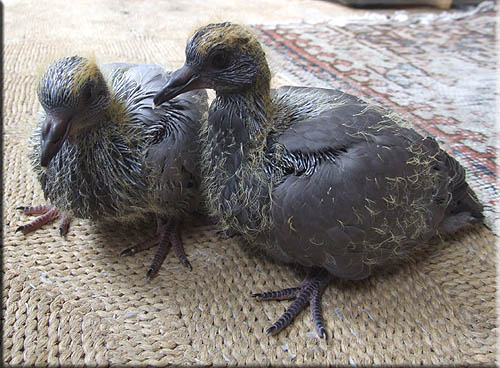
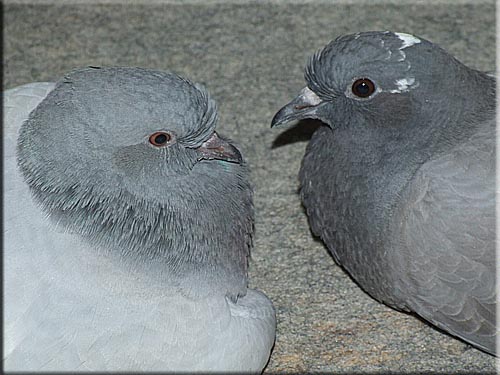


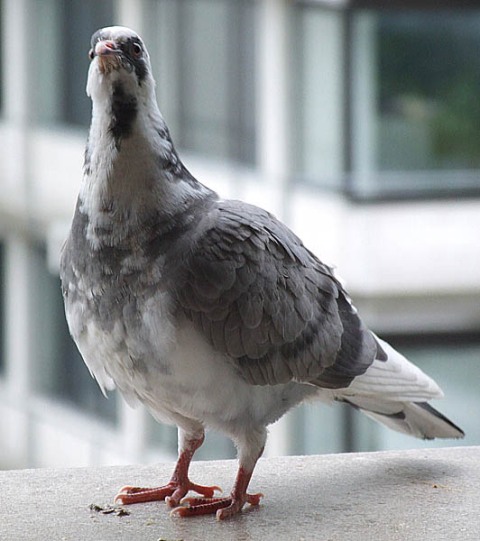
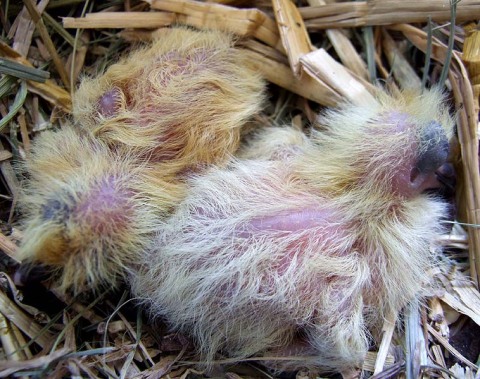
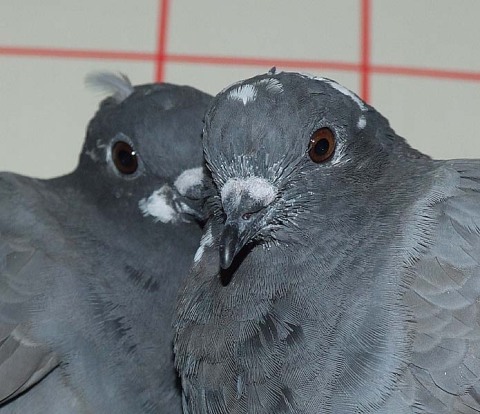
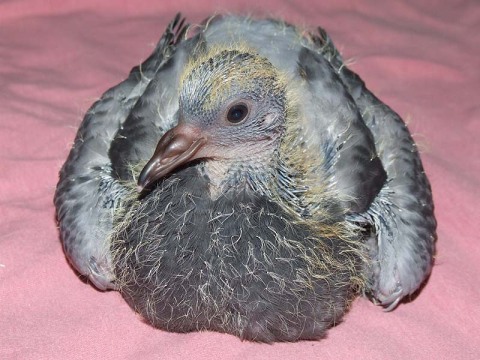

Very good info! 😀
Comment by Revati — April 1, 2010 @ 8:08 pm |
old birds treated while feeding young now loosing weight an feathers falling out any clues thanks
Comment by breda — April 22, 2010 @ 4:17 pm |
Breda – sorry for not answering earlier. I think you should contact a vet – I have absolutely no experience with de-worming.
Or you can contact Pij’n Angels forum on http://pij-n-angels.forumotion.net/
Comment by pigeonwriter — May 2, 2010 @ 5:05 pm |
No joke, I live in Manhattan and a random bird just shit on my head about 30 min. ago. I reached up to see if water from an air conditioner had fallen on my hair, or if it was bird shit. It’s blackish/green, and there were moving tapeworm segments in in. There’s no bird in sight, and no electric wires. Bird must have been high up in the sky. I run home, which is luckily a block away, and take a shower after a woman kindly wipes it all out with baby wipes I had in my bag. My question is, can I can catch any skin infections or anything from what just occurred? Are the tapeworm segments totally dead after a 10 min. shower and some chemical-laden shampoo?
Totally horrified,
Elektra
Comment by Elektra — May 14, 2010 @ 9:39 pm |
If this story is true and you recognized the thingies as tapeworm segments you should also know that it is impossible to get any skin desease from this. I admit this is a creepy incident but I also hope that you can laugh about it in some time. Please don’t overreact towards any birds now.
Comment by pigeonwriter — May 15, 2010 @ 8:12 am |
Do u guys know where I can purchase Berimax for our racing pigeons please ?? regards Geoffrey
Comment by Geoffrey Hennessy — January 9, 2012 @ 8:57 am |
Hi, save your money and check the internet. This product seems to be completely useless:
http://forum.pigeonbasics.org/topic/17901-berimax-for-canker/
Comment by pigeonwriter — January 9, 2012 @ 2:54 pm |
Can I give Ivomec and droncit at the same time? Please help, Im planning to buy a pair next week.
Comment by Lanier — February 1, 2012 @ 5:04 pm |
I do agree with all the ideas you have presented
in your post. They are very convincing and can certainly work.
Still, the posts are very short for newbies. Could you
please lengthen them a little from next time?
Thank you for the post.
Comment by how to get rid of lice — April 1, 2013 @ 12:46 am |
You are free to use the internet for you own research. I am only giving hints what and where to look for.
Comment by pigeonwriter — April 4, 2013 @ 8:08 am |